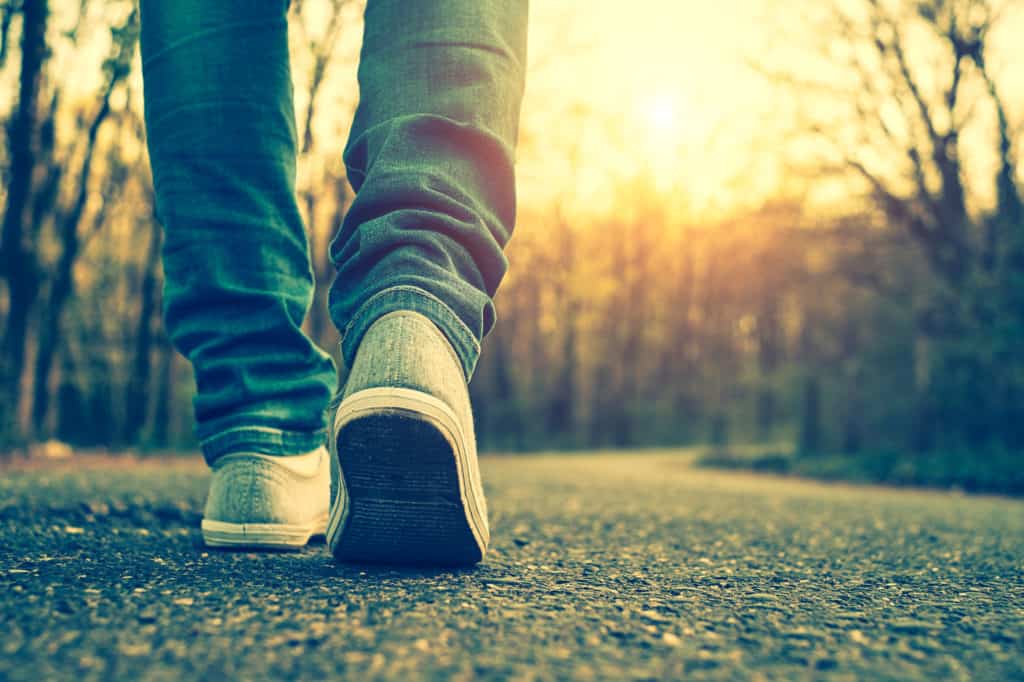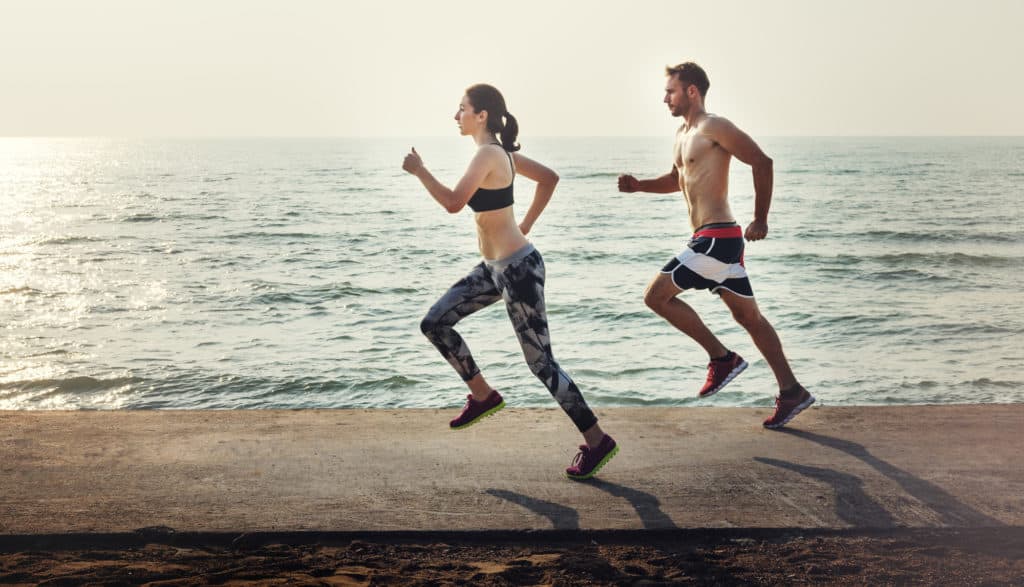After any period of illness that causes inactivity, your muscles can deteriorate and become weaker than normal. It’s why exercise is so important for getting back to health.
When asking a physical therapist, you’ll always be told how imperative it is to return to previous levels of activity. They may even tell you to aim for more activity, as it gets everything working again.
At the time of writing this, COVID-19 has ravaged humanity for more than a year, and we have regularly been asked about taking on forms of exercise during post-Covid recovery.
Any form of coronavirus leaves the person feeling weak, short of breath, and fatigued. But the strain (and subsequent mutations) of COVID-19 has unfortunately doubled these attributes. COVID-19 can have lasting effects and make recovery far more difficult than just the ‘common cold’.
These problems with tiredness can obviously cause great difficulty when trying to regain muscle strength, but don’t worry if you struggle with energy levels. It is completely normal to feel a reduction in energy for up to 8 weeks after a positive COVID-19 diagnosis.
So, should you exercise when suffering from COVID-19? In a nutshell, yes, but take your time and don’t push yourself. Start slowly – and not until you feel able!
Why Exercise Is Important For Recovery
You may not realise it at the time, but simply moving around the house (chores, housework, etc.) helps keep muscles from fatigue. When an illness strikes, you suddenly find these everyday jobs become more tiring.
With COVID-19, people report severe difficulty and shortness of breath just walking up and down their stairs. Basic movements can leave an aching sensation in your legs. Even going for a short walk around the yard can become exhausting.
However, while the situation can feel hopeless, performing some exercises helps you to fight off the lethargy and regain control. By being active, you may feel worse to start with, but you will break through that barrier fairly fast.
Regular activity not only helps you feel better in yourself, but it minimizes the stiffness in your joints and muscle pain. The exercises also burn energy, and you’ll gain a better night’s sleep.
Over time, this regular exercise will help you to manage the tiredness and improve your stamina. What once left you floored will become a minor inconvenience.
Why Is Exercise Such Hard Work With COVID-19?
Coronavirus commonly attacks the respiratory system, which causes difficulty breathing. There is also a build-up of phlegm that adds to the breathlessness; making strenuous movement and exercise far more arduous than before.
Alongside that, COVID-19 can cause further physical problems with muscles and joints, weight loss (from a loss of appetite), and reduced mobility. As you would expect, exercise can become extremely demanding and difficult when movement is restricted, or your body hasn’t received enough fuel.
It is estimated that you will have lost 2% of your muscle mass each day during your illness, according to the British National Health Service (NHS).
However, there are more than just physical complications from coronavirus. COVID-19 can also bring about problems sleeping, issues with mental health, elements of PTSD, changes in your mood, and disorientation.
Not to mention the dehydration that comes from vomiting, diarrhea, fever, or trouble swallowing; all of which are further symptoms of COVID-19.
Trying to exercise while suffering these symptoms is more than just an uphill battle. It’s actually impossible to undertake without causing further – or long-lasting – damage.
We would not advise setting out an exercise plan until you can breathe more easily, and have mostly recovered from the virus. And, once you have…
…Start Slowly!
When recovering from COVID-19, you should not push yourself to speed the process up. That’s going to be detrimental to your recovery. Instead, you should aim to slowly increase your activity and allow your body time to ease back to health.
Regular exercise is certainly the best way to regain your stamina and wellbeing, but always set realistic targets – and don’t forget to rest when you feel tired! Try to do short and regular activities, with plenty of rest in between.
The biggest factor to monitor when reintroducing gradual activity is your breathing. An adult with strong fitness levels depends heavily on breath control when exercising, and recovery from COVID can strip a fit individual of deep breathing ability.
One way to keep on the correct side of excursion is to exercise at a level where you are only slightly out of breath, but can still talk without problems.
COVID-19 Recovery: Walking
‘Going for a walk’ almost sounds like taking baby steps, especially if you have been used to more vigorous exercise. Yet, it’s the perfect place to start after an illness like COVID-19.
Walking is one of the greatest ways to safely build your strength back up. Gradually increasing your distance with each venture will certainly help regain your strength and fitness, but always set yourself some realistic goals in terms of walking distance. Particularly if you have suffered (or continue to suffer from) Long Covid.
When Long Covid strikes, your projected recovery can suddenly feel like a non-viable achievement. It can feel like one step forward, followed by a dozen backward. And taking these ‘baby steps’ will make all the difference.
Even if you set a goal of combating the fatigue to walk to the bathroom, or make it outside, then you will be making excellent progress. Only increase the distance when you feel ready.
When you head out for a walk, plan your journey with plenty of resting points. This allows you to take a break should you feel breathless or excessively tired.
These rest points can be something as basic as a wall or a bench, or a fancier pitstop – such as a park or cafe.
Try to aim for 5-10 minute increments with every walk, until you feel slightly out of breath – striking that balance where you can still walk and talk. It would be best if you walk reasonably quickly, to avoid stagnation and lack of progress.
COVID-19 Exercise Recovery Without Leaving The House
Not everyone can get outside or to the gym. Circumstances may not allow, courtesy of underlying health conditions. Or, simply, you may not feel comfortable mixing with other people.
The current and ongoing pandemic has created a large impact on social anxiety, and you shouldn’t force yourself out of the house purely for the sake of exercise. Instead, there are a range of motions and stretches that you can do from the comfort of your own home.
By undertaking 20 Seated March exercises, Rowing Arms, Toe Lifts, and Knee Raises, you can increase your core flexibility, balance, and strength.
If you have exercise equipment at home, then that’s even better! Get on that exercise bike for short bursts of activity, or run your treadmill at the lowest speed and the most gentle gradient.
If you are struggling to feel any improvement by week 8, reach out to your doctor. Alternatively, seek advice from your physical therapist.
Furthermore, if you experience any form of extreme pain, dizziness, or extreme shortness of breath, then stop immediately. Seek medical advice if exercise is making things worse.
Most Importantly – Don’t Give Up!
You will have good days in your recovery against COVID-19, but you will also have bad ones. It’s completely normal to have setbacks, but this is no reason to feel like you have failed.
It’s easy to fall into a recession and choose not to continue with an exercise plan, but you’ll be shooting yourself in the foot. Remember, the less you do then the less you will want to do, and then the less you will be physically able to do.
It is completely normal to feel warm and sweaty during your exercising, so don’t let that put you off. Your muscles can ache afterwards, but this effect will lessen as you keep going. Even so, muscle ache won’t last longer than a couple of days. Keep going!
Can Physical Therapy Help?
Physical Therapy remains a highly effective way to get back on your feet after beating COVID-19. Not only can a physical therapist help to guide you through the benefits of exercise and movement, but they can steer you away from accidental injury and help you pace yourself properly.
If you are struggling for motivation, regular contact with a PT can make the world of difference.
At Intecore, we never generalize our patients. Everyone reacts to COVID-19 differently, and an approach with physical therapy that works for most people may not work for you. We take the time to get to know you and understand your situation and circumstances.
Why? Because it means we can tailor your bespoke treatment package towards the best recovery possible.
You can get in touch with us through our contact page, or visit one of our clinics.
Don’t suffer in silence. If you are struggling, then we are here to help you.
Let’s do this together, and shake off the ill effects of COVID-19. It’s time to get you back to full health!
- Why Regular Body Maintenance is Crucial for Long-Term Health - April 21, 2024
- 3 Things Aggravate Knee Pain After Biking and How to Ease It - April 14, 2024
- Runners Knee Stretches: Top 5 Stretches Every Runner Needs to Know - April 7, 2024




















